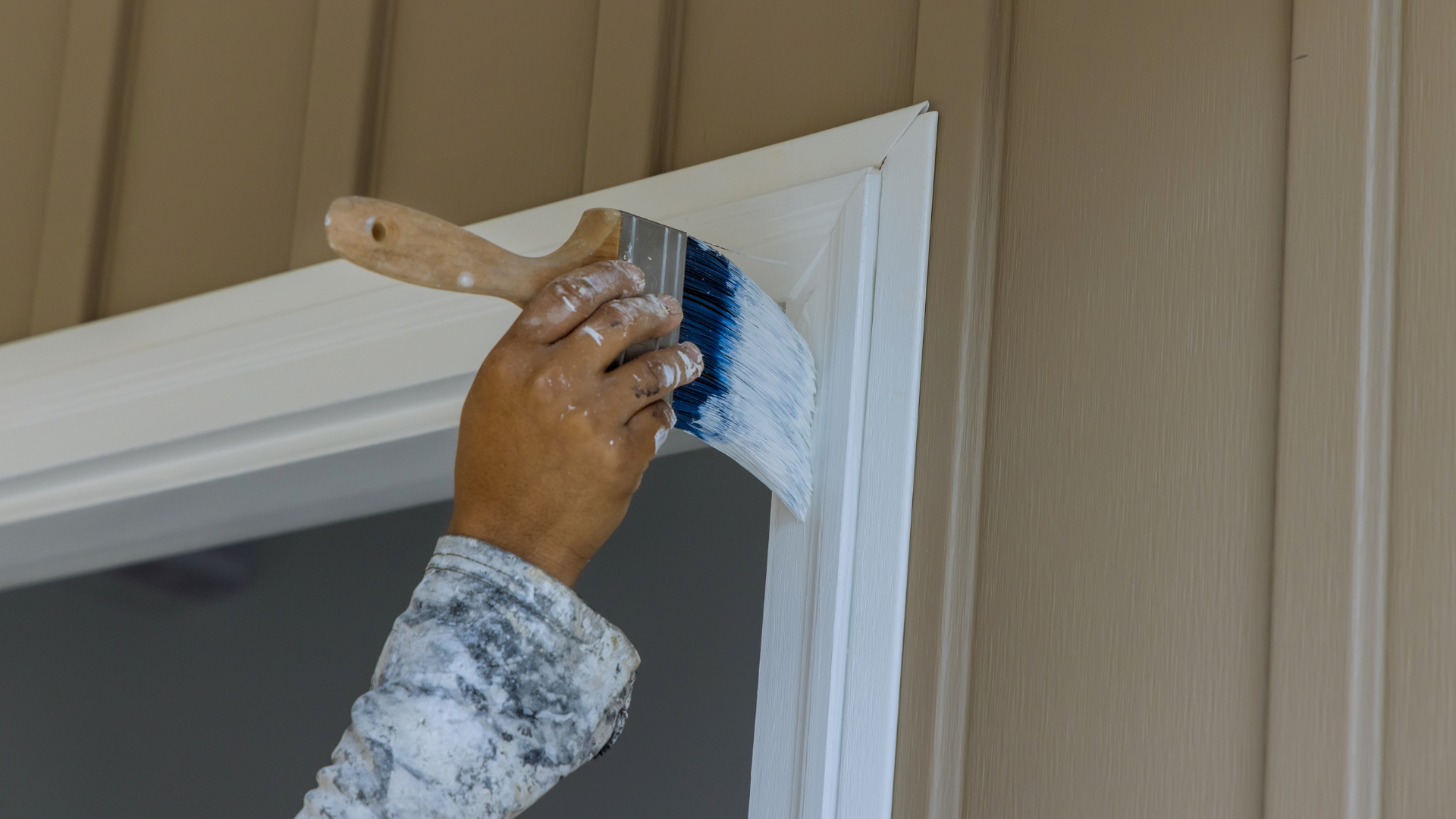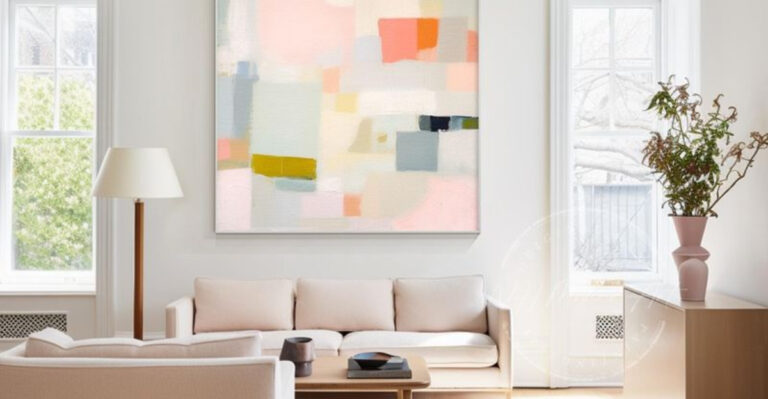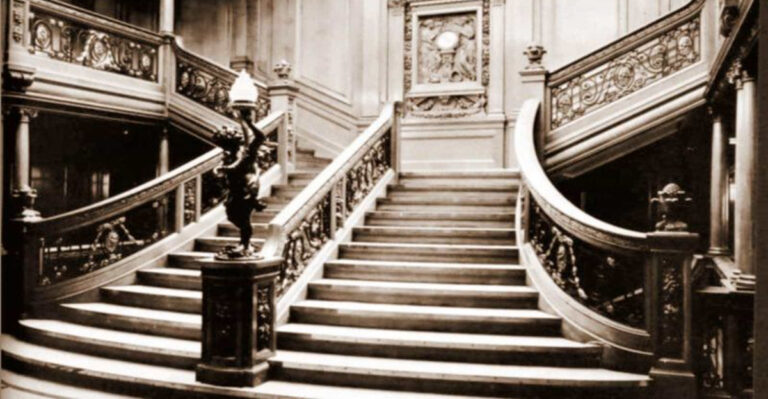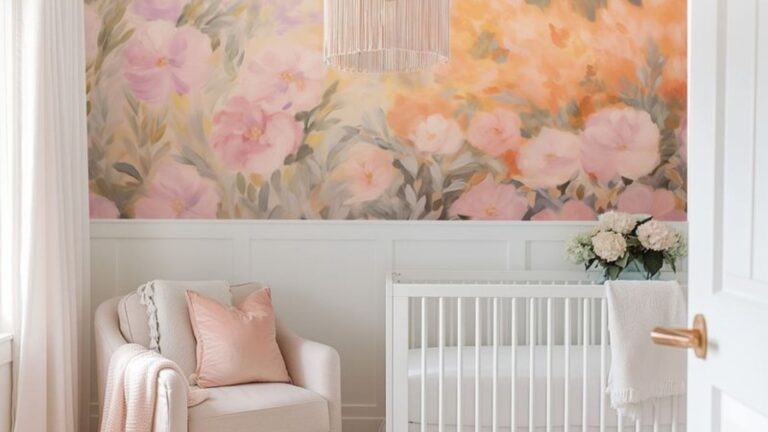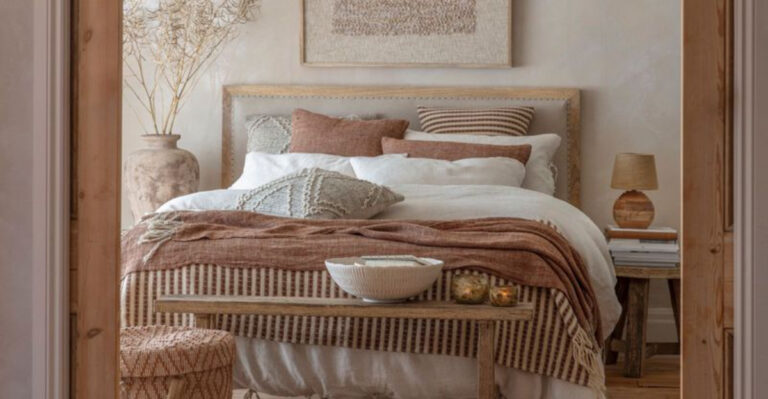Dark Trim Vs. Light Trim – Which One Works Best For Your Space? (20 Example Images)
Deciding between dark or light trim might seem like a small detail, but it can really change how a room feels. I’ve found that trim color affects not just the mood, but also how open or cozy a space seems.
Light trim can make things feel brighter and more airy, while dark trim adds contrast and a bit of drama. It really comes down to what suits your space and personal style.
To help you decide, we’ll take a look at real-life examples that show how both options can work in different kinds of rooms.
1. Classic White Trim With Navy Walls
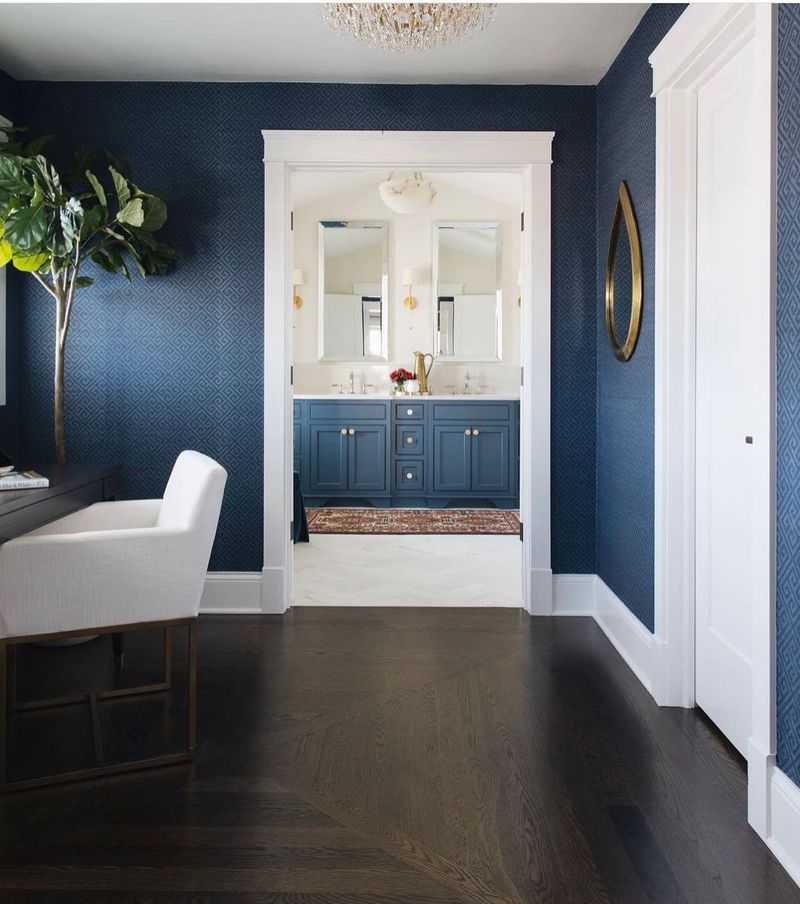
White trim against navy walls creates a crisp, clean contrast that makes any room pop. The white outlines windows and doors like picture frames, drawing your eye to architectural details you might otherwise miss.
Navy walls feel cozy and grown up, while white trim keeps things from getting too cave like. This combo works wonders in studies, dining rooms, or bedrooms where you want some drama without going too dark.
2. Moody Black Trim On White Walls
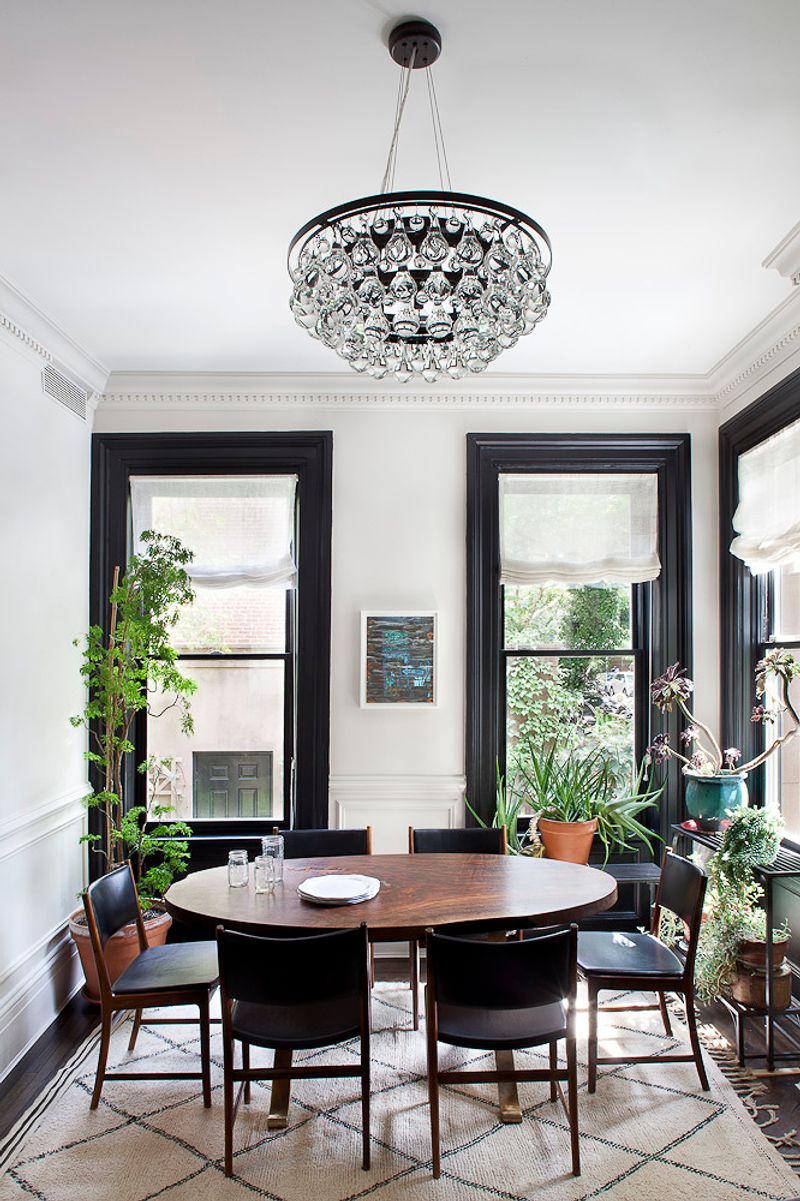
Black trim on white walls flips the traditional look on its head. This bold choice adds architectural interest even in newer homes that lack built in character.
The stark contrast creates drama without requiring colorful walls, making it a friend to minimalists and modern design fans.
Your furniture and art will stand out beautifully against this graphic backdrop, almost like they’re being showcased in a gallery.
3. Tone On Tone Gray
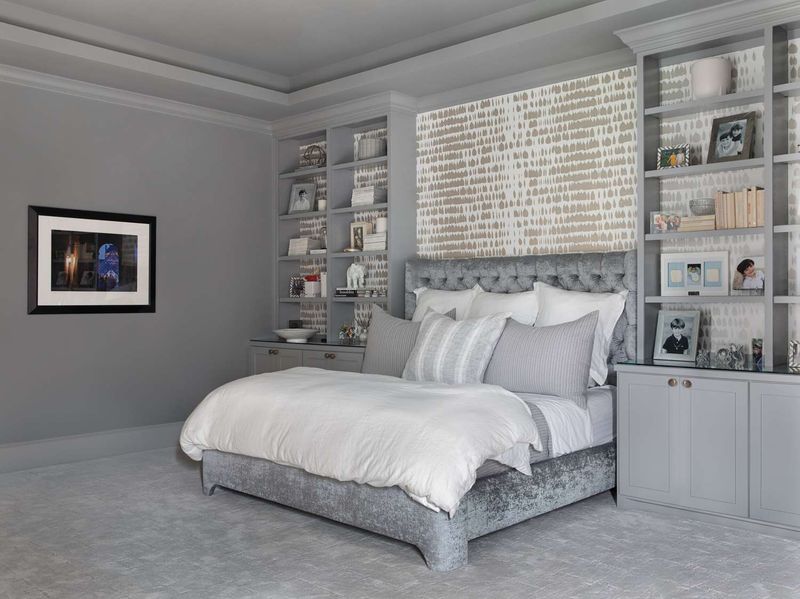
Gray walls with slightly darker gray trim create a calm, unified look that feels both modern and timeless.
Without stark contrast, rooms feel larger and more peaceful, as your eye flows smoothly around the space. This subtle approach works great in bedrooms or living areas where relaxation is key.
The lack of sharp visual breaks allows artwork and furniture to really shine, while still giving the room some definition and depth.
4. Bold Black Trim In A Bathroom
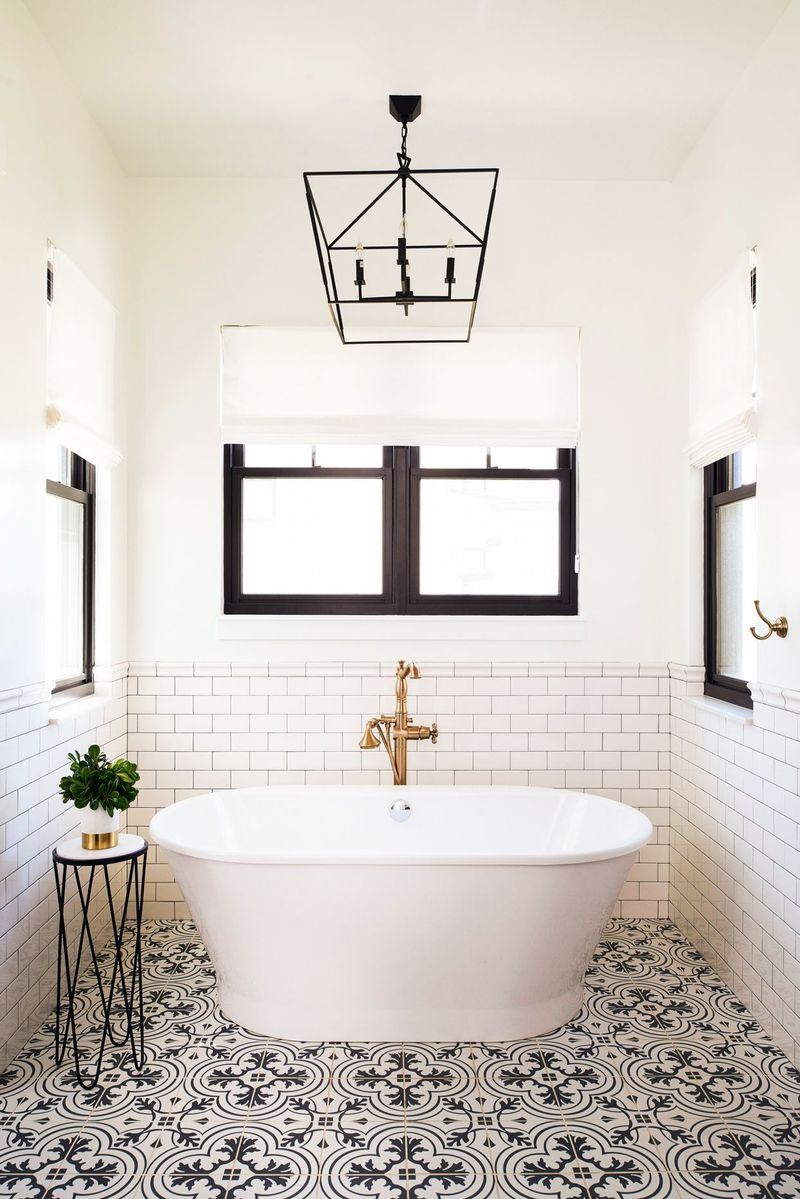
Bathrooms transform into spa like retreats with black trim against light walls. The contrast feels unexpected and luxurious in a space that’s typically all white.
Black window frames, mirror frames, and door casings add definition that makes even builder grade bathrooms feel custom.
This look pairs wonderfully with brass fixtures and natural elements like wood or plants for a balanced, current feel that won’t quickly go out of style.
5. Matching Walls And Trim In Sage Green
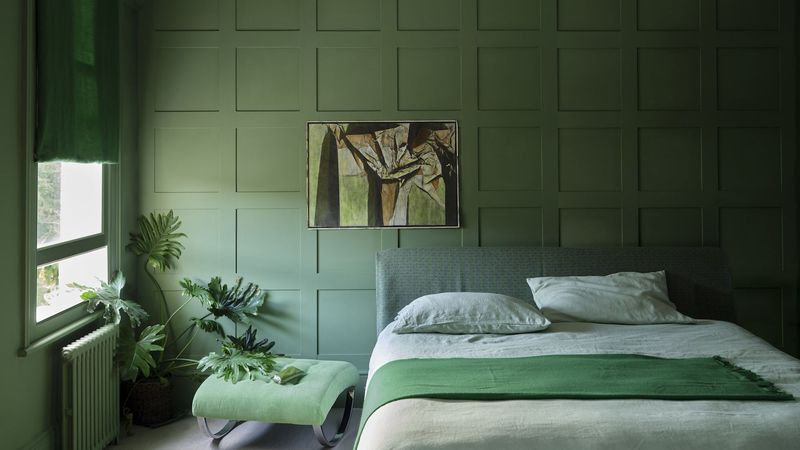
Walls and trim painted the same sage green color create a cocooning effect that wraps around you like a hug.
Without contrast between elements, the eye perceives the room as larger and more unified. This approach feels especially calming in bedrooms or reading nooks.
The continuous color removes visual clutter, allowing furniture and decor to stand out more prominently against the single hue backdrop, creating a peaceful sanctuary from our busy visual world.
6. Natural Wood Trim With Neutral Walls
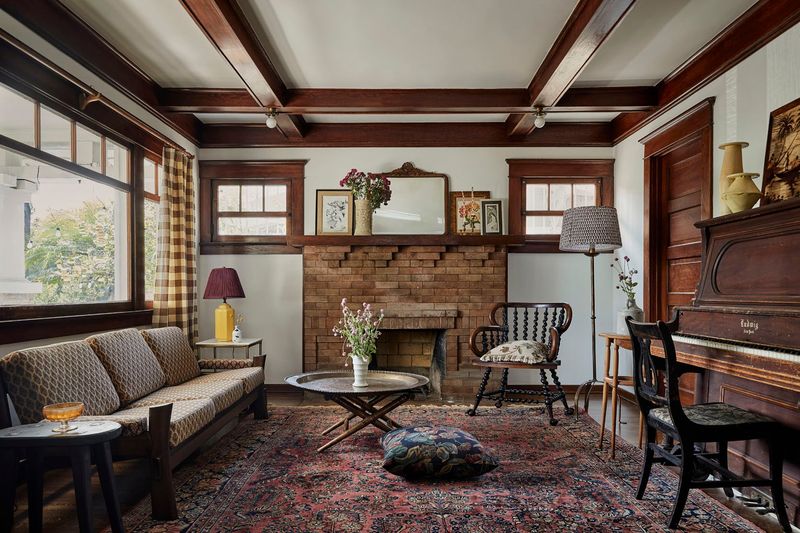
Natural wood trim brings warmth and character to any space, especially against soft neutral walls.
The organic quality of wood adds texture and interest without requiring bold color choices. Homes with original woodwork benefit from letting these architectural treasures shine.
The contrast between wood and wall creates a frame effect that highlights windows and doorways, while the wood tones ground the space and connect it to nature.
7. Dramatic Dark Walls With Dark Trim
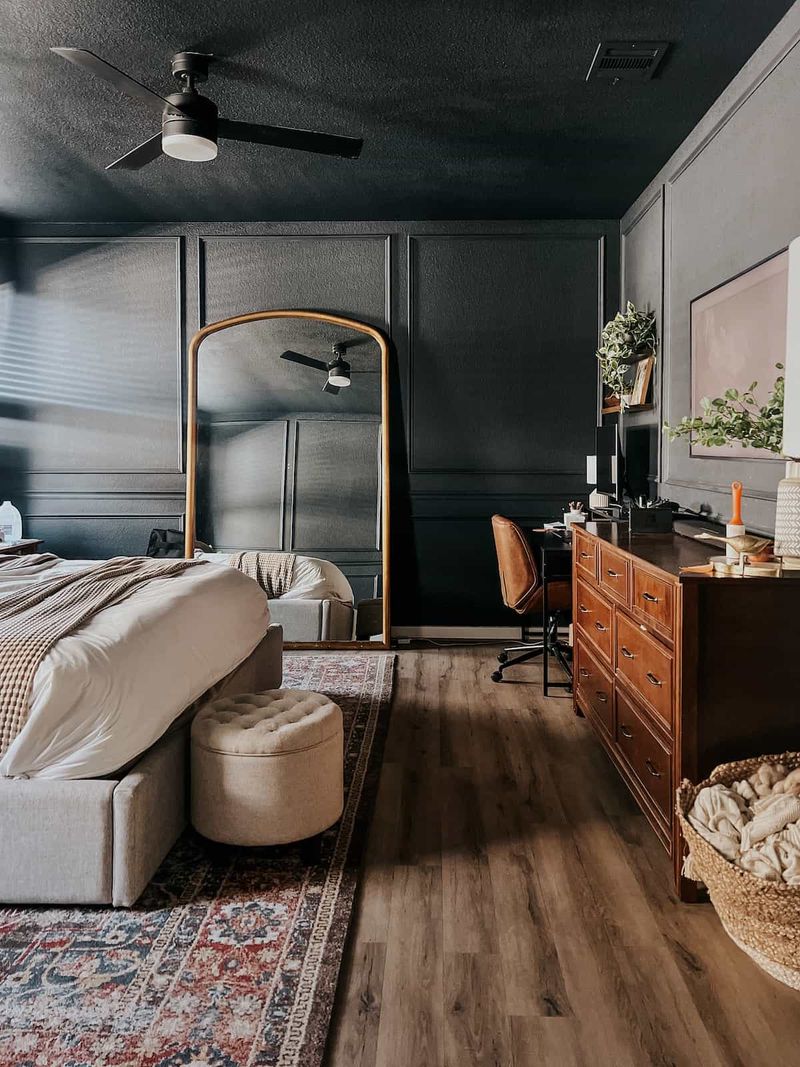
Dark walls paired with matching dark trim create drama and intimacy that can transform ordinary rooms into extraordinary spaces.
The seamless look makes walls recede, creating an infinite feeling that adds depth. This bold choice works surprisingly well in small spaces like powder rooms or dining rooms.
When walls, trim, and ceiling all wear the same deep color, the boundaries of the room seem to disappear, making the space feel like a jewel box.
8. Cream Trim With Earth Tone Walls
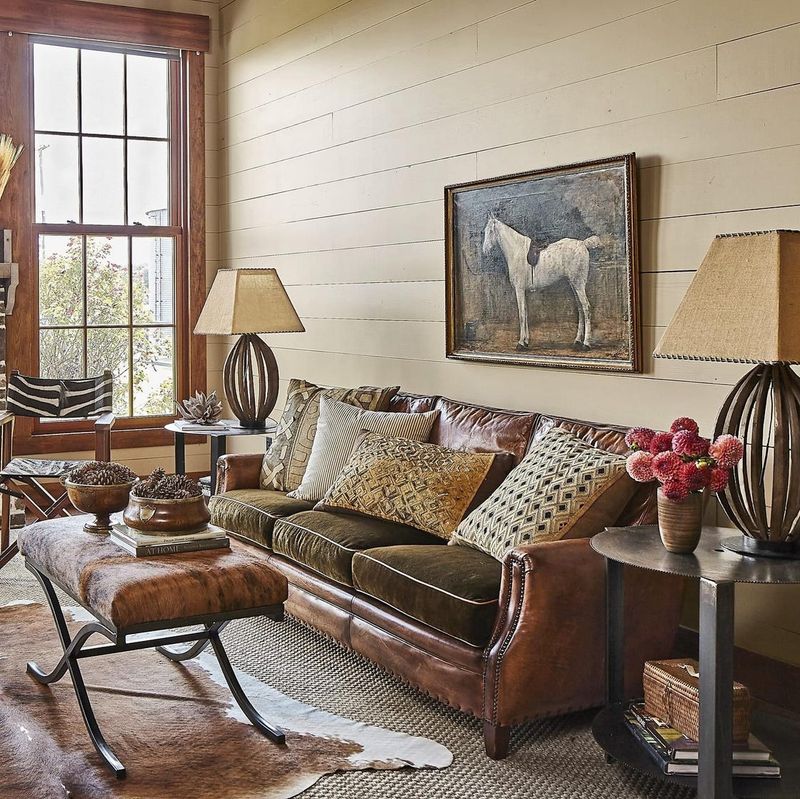
Cream trim softens the look of earth tone walls, creating a warm, welcoming space without the starkness of bright white.
This gentle contrast feels more relaxed and organic than sharper white trim options. Terracotta, olive, or clay colored walls gain dimension without harshness when paired with cream trim.
The result feels timeless and grounded, like something you’d find in a well loved country home or Mediterranean villa where comfort takes priority over trends.
9. Light Gray Trim With White Walls
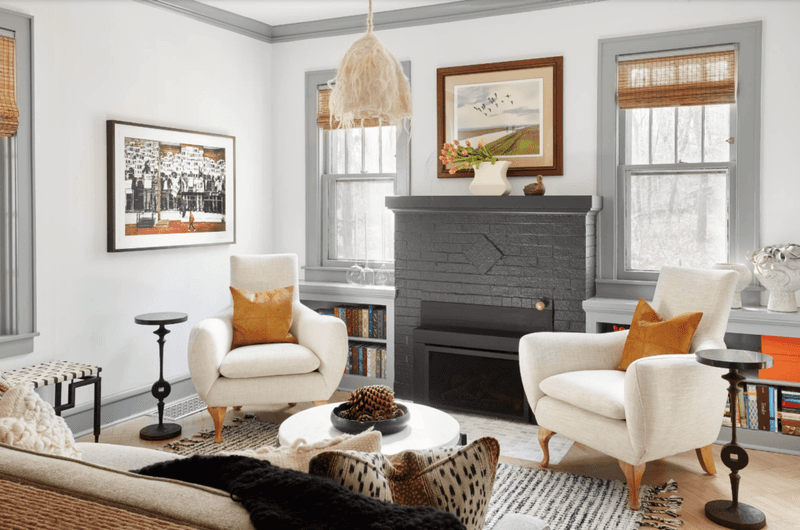
Light gray trim with white walls flips traditional expectations for a subtle twist. The soft contrast adds architectural interest without the boldness of darker trim choices.
This unexpected pairing works wonders in spaces that get lots of natural light.
Gray trim grounds the space while still keeping things bright and airy, making rooms feel thoughtfully designed rather than builder basic, while maintaining a light, expansive feeling throughout.
10. Colorful Trim In A Kid’s Room
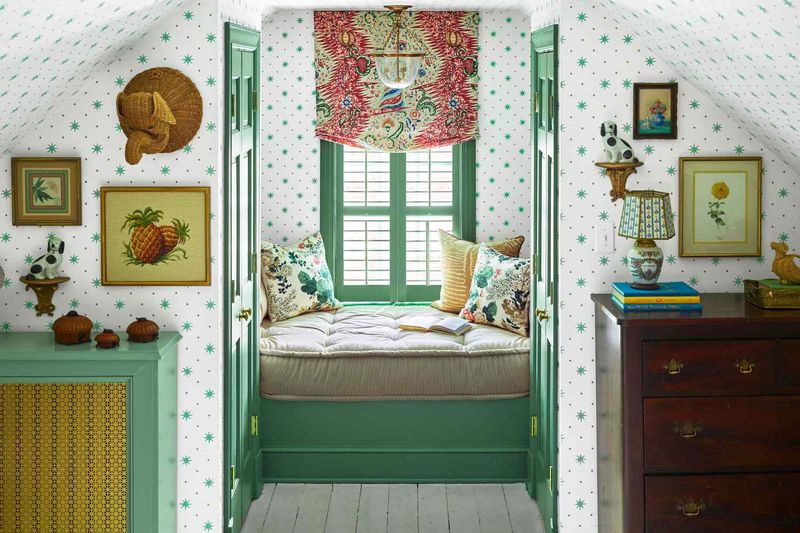
Kid’s rooms come alive with colorful trim that adds playfulness without overwhelming the space. Imagine teal trim against white walls or yellow trim with light gray walls for a whimsical touch.
This approach lets you incorporate fun colors in a way that’s easy to change as tastes evolve.
Colorful trim around doors, windows, and along baseboards creates framing that defines the space while adding personality that plain white trim simply can’t match.
11. Light Wood Trim With Pastel Walls
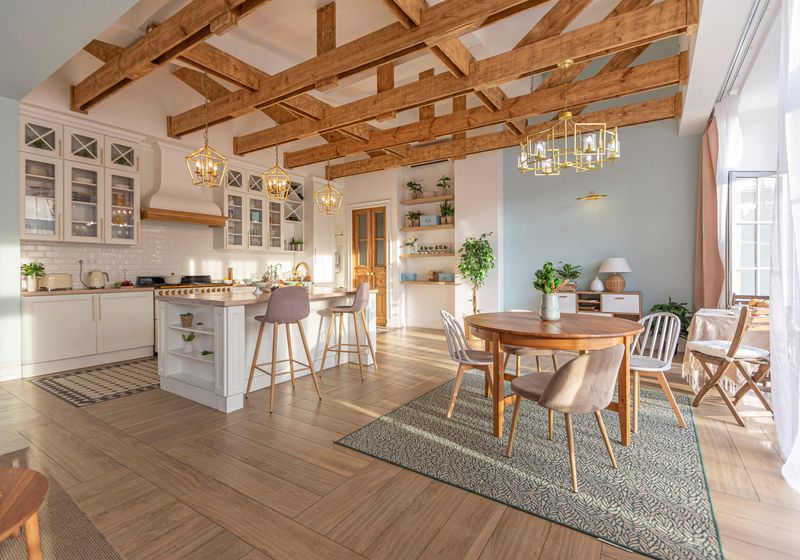
Light wood trim paired with pastel walls creates a soft, Scandinavian inspired look that feels both fresh and timeless. The natural element of wood brings warmth while the pastel adds subtle color.
This combination works beautifully in bedrooms and nurseries where a calming atmosphere is key.
The light wood prevents the pastel from feeling too sweet or juvenile, adding just enough structure and natural texture to create balance and visual interest.
12. High Contrast Black Trim In A Kitchen
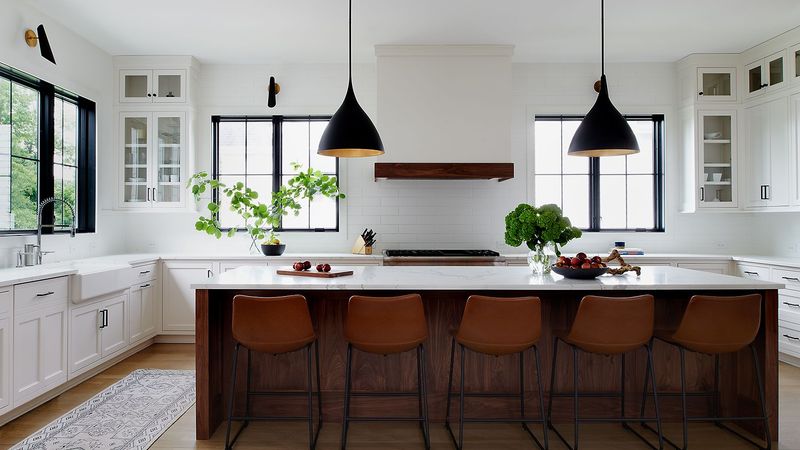
Kitchens gain instant character with black trim against white or light colored walls. The graphic punch draws attention to architectural features while creating a framework for the entire space.
Black window frames in particular make views to the outside look like framed artwork.
This high contrast approach pairs wonderfully with both modern and traditional kitchen styles, adding definition that highlights cabinetry, backsplashes, and other kitchen elements.
13. Stained Wood Trim With Bold Colored Walls

Rich stained wood trim brings out the depth in bold wall colors like emerald, burgundy, or sapphire blue. The natural warmth of wood balances strong colors that might otherwise overwhelm a space.
Homes with original wood trim benefit from this pairing that honors architectural history while feeling current.
The combination creates rooms with character and depth that feel both grounded and dramatic, especially in spaces like libraries, studies, or formal dining rooms.
14. Light Trim In An Attic Space
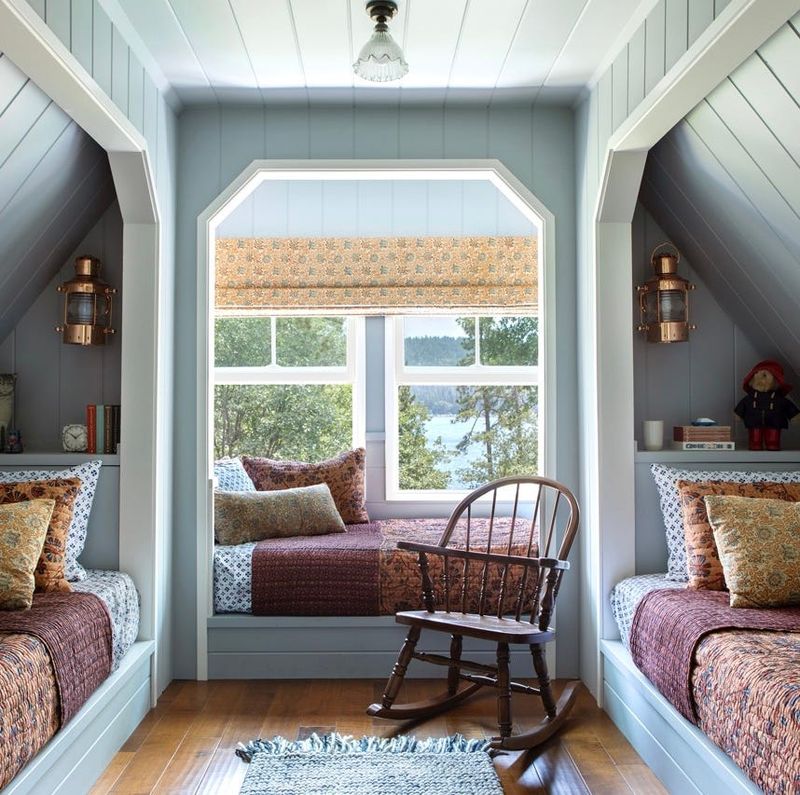
Attics transform with light trim that brightens sloped ceilings and awkward angles. White or light colored trim creates definition that helps the eye make sense of unusual architectural features.
The contrast between trim and walls prevents the space from feeling like a cave, even with limited natural light.
This approach works wonders in converted attic bedrooms, offices, or playrooms, making them feel intentional rather than leftover spaces.
15. Dark Green Trim With Neutral Walls
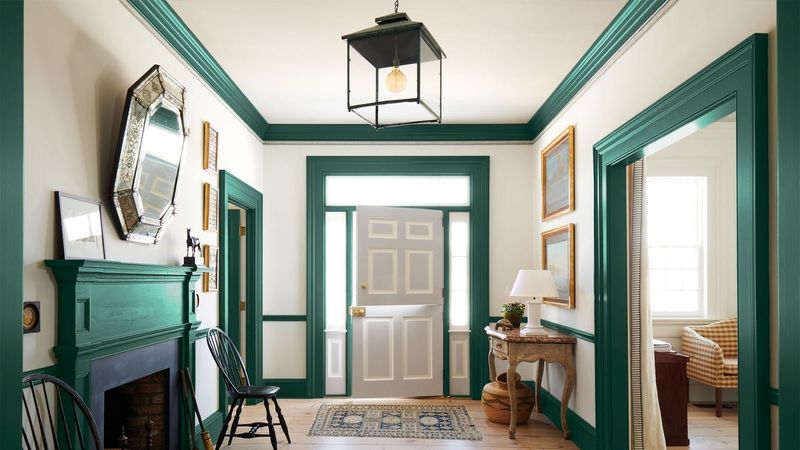
Forest green trim creates unexpected sophistication when paired with neutral walls. This combination feels both fresh and traditional, with a nod to historic homes without feeling stuffy.
The dark green acts almost like a neutral itself but with more personality than black or brown.
Living rooms and entryways particularly benefit from this pairing, as the green trim frames views into other spaces while adding a natural element that connects indoor spaces with the outdoors.
16. White Trim In A Sunroom
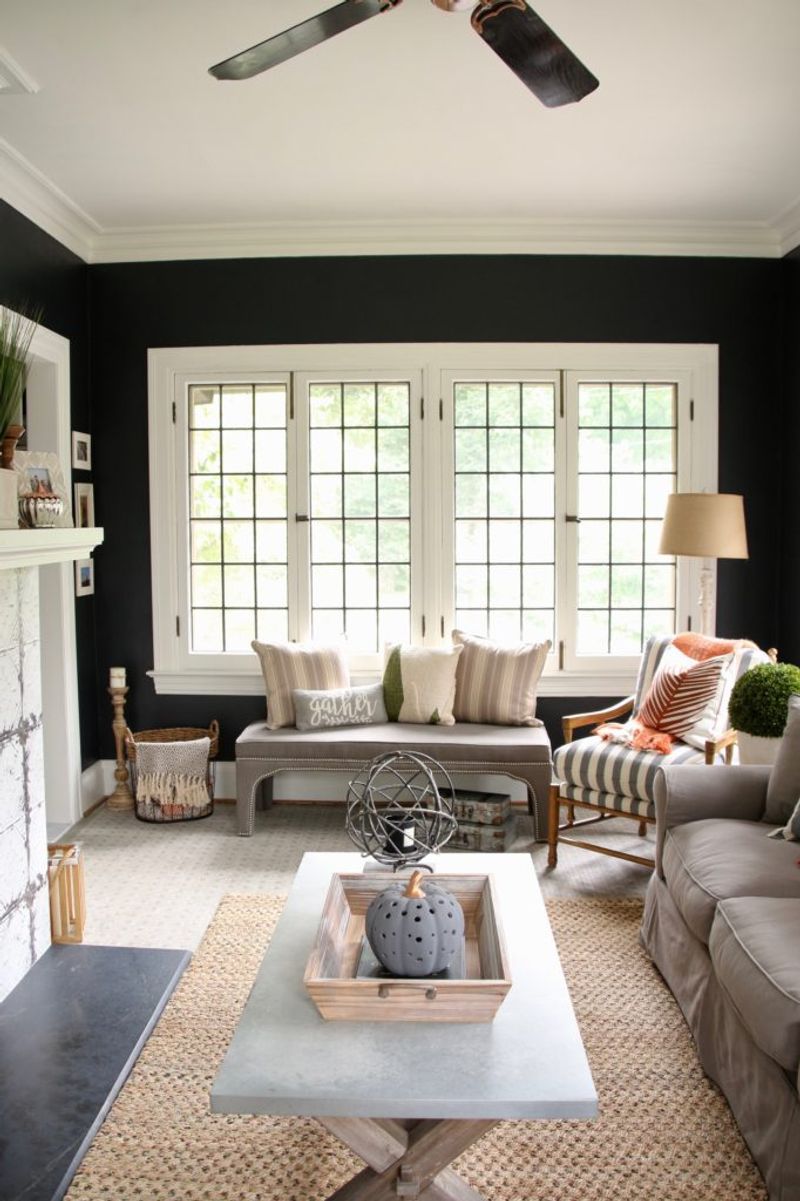
Sunrooms shine brightest with crisp white trim that maximizes light reflection. The white outlines windows and doors, creating a gallery like effect that frames outdoor views.
This classic choice never goes out of style and complements any wall color you might choose.
White trim in sunrooms also creates a clean, bright transition between indoor and outdoor spaces, making even cloudy days feel lighter and more cheerful.
17. Navy Blue Trim In A Home Office
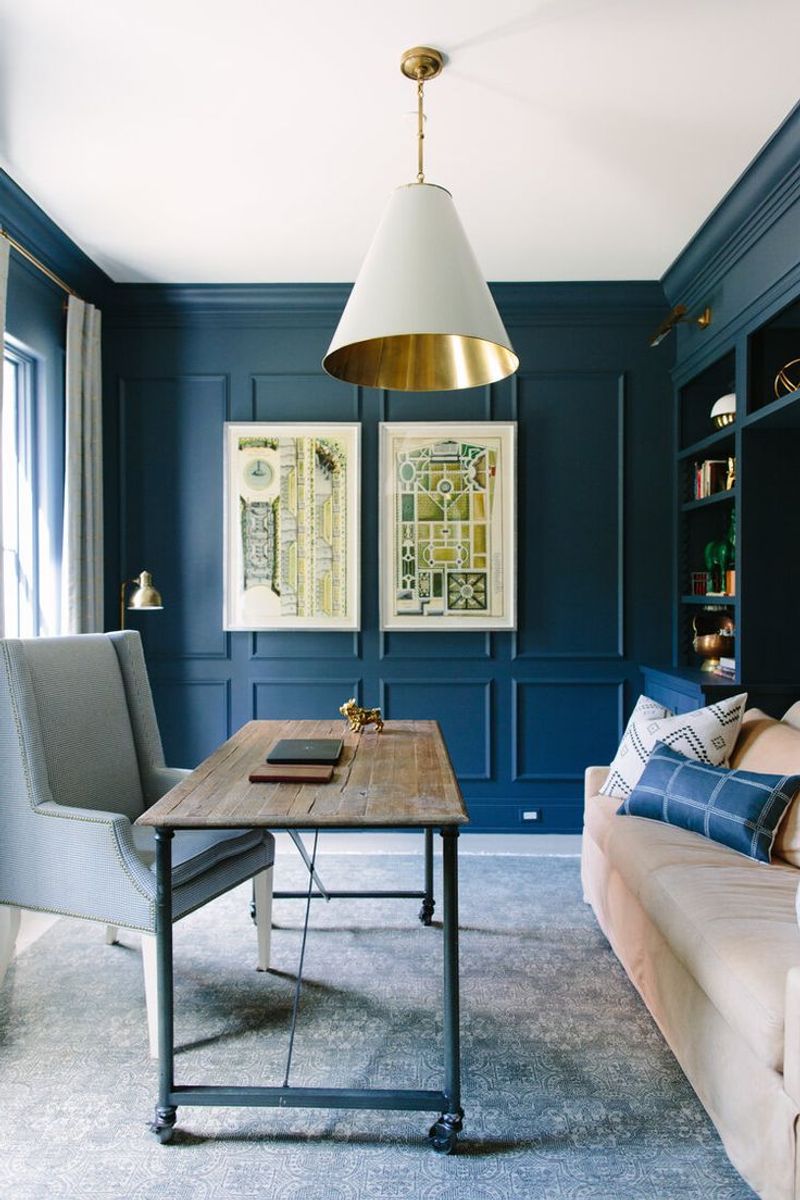
Home offices gain focus and professionalism with navy blue trim against light walls. The deep color frames the space without the heaviness of black, creating definition that helps concentration.
Navy trim works especially well in Zoom backgrounds, adding architectural interest that looks thoughtful on camera.
This color combination balances professionalism with personality, making your workspace feel distinct from the rest of your home without requiring a complete room transformation.
18. Two Tone Trim In A Victorian Home
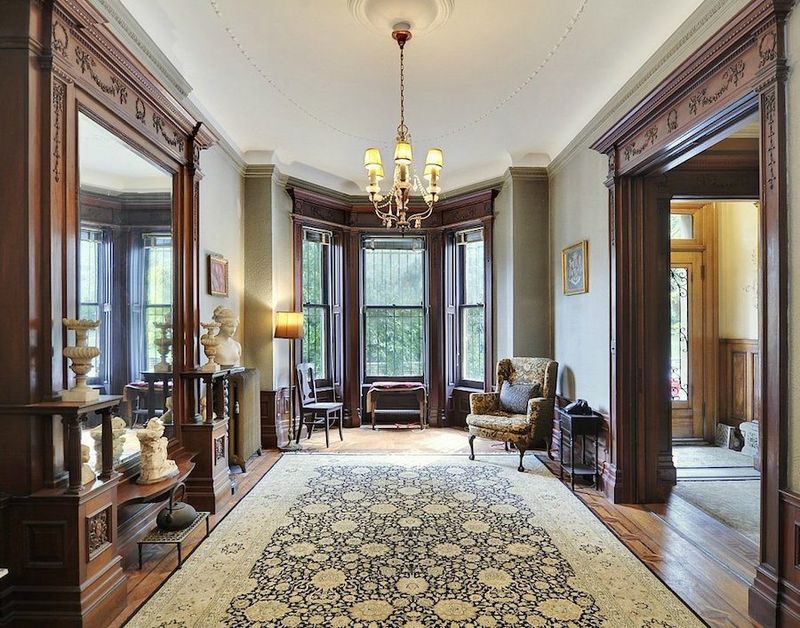
Victorian homes showcase their intricate trim work with two tone approaches that highlight architectural details.
Imagine door frames in one color with medallions or ornate pieces in a complementary hue. This historically inspired treatment brings attention to craftsmanship that might otherwise go unnoticed.
The layered colors add depth and dimension to ornate moldings, ceiling medallions, and other decorative elements, honoring the home’s character while updating it for modern living.
19. Light Trim In A Low Ceiling Basement
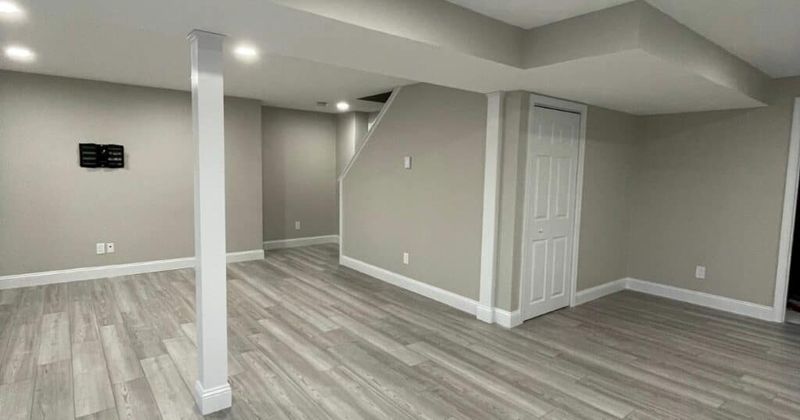
Basements with low ceilings benefit enormously from light colored trim that creates the illusion of height.
White or light trim against slightly darker walls tricks the eye into seeing more space than actually exists. This approach helps basement spaces feel less cave like and more intentional.
The light trim draws the eye upward and outward, making previously overlooked spaces feel more welcoming and less like an afterthought in your home design.
20. Rustic Wood Trim In A Mountain Home
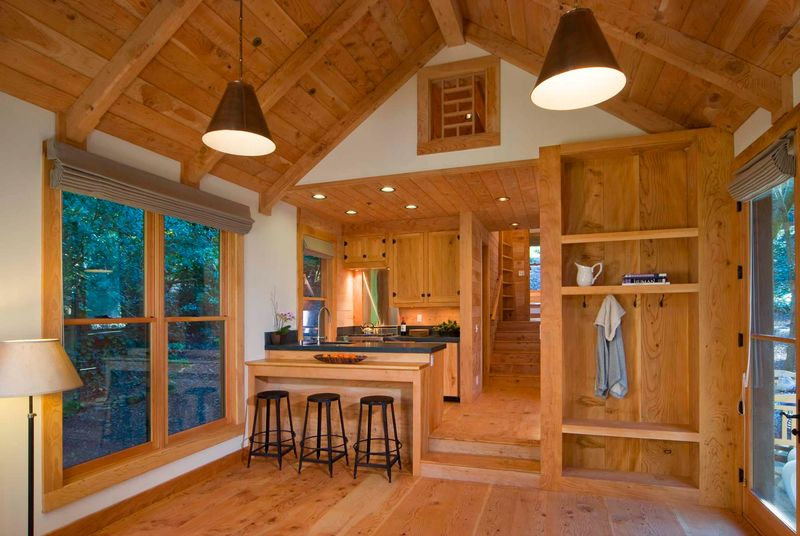
Mountain homes and cabins come alive with rustic wood trim that brings the outdoors inside.
Knotty pine, cedar, or reclaimed barn wood trim adds character and warmth that paint simply can’t match. The natural variations in the wood create visual interest against any wall color.
This approach feels especially appropriate in vacation homes or retreats where connecting with nature is part of the experience, creating spaces that feel authentic to their surroundings.

